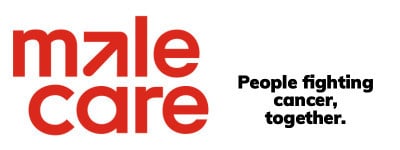In an online article published Friday, November 6, 2015 Dr. David Crawford raises some very serious questions about how we standardly use hormone therapy (ADT) in the treatment of men with advanced prostate cancer. He claimed that not only is it vital for initial positive outcomes, it is vital for the successful use of the new, second line ADT treatments (Zytiga, Xtandi) to achieve castration levels that are as low as possible, at least less than 20 ng/dL.
He cited evidence that men treated with hormone-based therapies for androgen-sensitive prostate cancer (ADT) have better outcomes when they achieve testosterone levels less than 7 ng/dL—significantly lower than the 50 ng/dL that the FDA recognizes as a castration threshold. Dr. Crawford’s comments were made in a presentation at the 2015 Large Urology Group Practice Association (LUGPA) Annual Meeting.
“Prostate cancer is a hormonally dependent cancer and we need to understand that. The goal is to lower or block androgens, and the lower the better. Get the level as low as you can and keep it as low as possible,” said Crawford, who is head of Urologic Oncology at the University of Colorado. Dr. Crawford cited a number of studies that showed that there is a two-fold difference in risk of death between men with testosterone levels less than 20 ng/dL and those with levels greater than 50 ng/dL.
Currently the FDA still bases its standard on an old technique for measuring testosterone that cannot detect levels much lower than 50 ng/dL. We now have newer chemoluminescent and mass spectrometry techniques can measure as little as 0.1 ng/dL. Dr. Crawford questioned why when it is possible to be tested for even lower levels why we don’t take advantage of the technologies. Crawford said mounting evidence supports a standard of <20 ng/dL, the level that Malecare has advocated for over the last 5 years.
Crawford pointed out that when the LHRH agonist leuprolide (Lupron) was approved in 1985 there was only one study, which compared the drug with DES, the then standard of care. In addition the trial only consisted of 199 men and only measured survival at 1 year.
Today, we have many additional drug alternatives to stop the production of testosterone as well as block the cancer cells from utilizing any testosterone made in the body. These other drugs include estrogens (e.g, diethylstilbestrol), bilateral orchiectomy, LHRH agonists (e.g. leuprolide), and the GnRH-antagonist degarelix (Firmagon) as well as the antiandrogens, such as flutamide and bicalutamide.
However, we know that the different pharmacological approaches to ADT are not equal in their ability to block the production of androgens, and their performance is erratic both from man to man and even from time to time in the same man. A 2007 study showed that one in four men treated with LHRH agonists had testosterone levels less than 50 ng/dL during their therapy. Other common variations include testosterone surges or flares and some men don’t respond at all.
The very important take home from Crawford’s presentation is that it is vital to monitor a man’s testosterone levels regularly while they are receiving LHRH agonists and be alert for inadequate response. Not only is this important for the therapy itself, there is also evidence that the performance of secondary therapies like steroids and antiandrogens may depend partly on how well the initial therapy works.
Crawford said, “When patients fail hormonal therapy, second-line therapy gives us a 30% response, and why is that? “It’s because they weren’t suppressed to begin with, and if we did a better job of doing that, that wouldn’t happen.”
http://www.onclive.com/conference-coverage/LUGPA-2015/crawford-questions-adt-standards-approaches-in-prostate-cancer#sthash.9uHLtqHc.dpuf

Leave A Comment